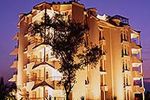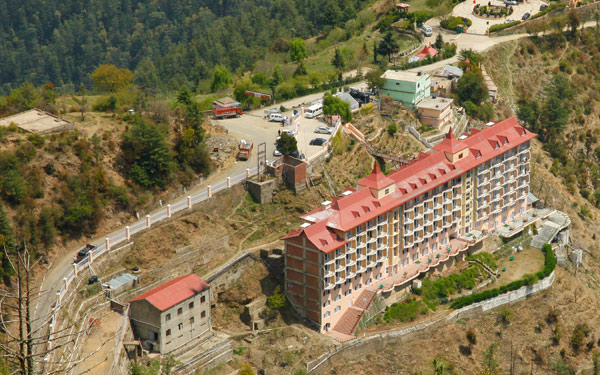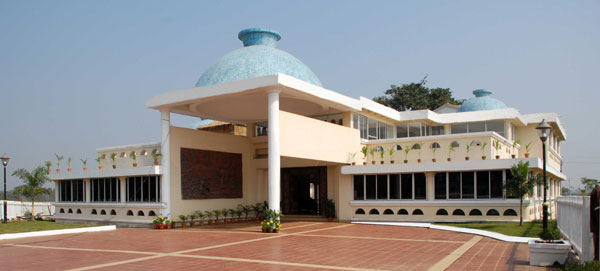Maduari - Athens of the East OR City of Festivals OR City of Four Junctions OR Sleepless City
STATE - TAMIL NADU
DISTANCE - 446 KM From Bangalore,172 KM From Rameshwaram, 128 KM From Tiruchchirappalli.
CONNECTION
By Air : Madurai has its own Domestic airport which is around 10 km from Madurai city. It has flights coming in daily from Chennai, Bangalore and Coimbatore.
By Rail : Madurai is considered to be a major railway station in the South. It is well connected to all the other major railway stations and there are trains that run directly to these important stations.
By Road : NH-7 and NH-45 connect Madurai ti all parts of India. From all big cities of Tamil Nadu, there are State transport buses and Luxury coaches that ply to and from Madurai.
ABOUT MADURAI
Madurai city is located in the south of Tamil Nadu. It is the second largest city in the state of Tamil Nadu. It is also considered as an important cultural and commercial centre of Tamil Nadu. Madurai is located on the banks of the river Vaigai. Madurai is bounded on the north by the district of Dindigul, on the east by Sivagangai, on the west by Theni and south by Virudhunagar. Madurai city has 3 hills as its city boundary mainly, Yanaimalai, Nagamalai, Pasumalai named after Elephant, Snake and Cow respectively. The city has been called the "Athens of the East" because of its great architecture and meticulous planning, comparable to that of the Greek capital.
It was a fall from eternal glory to deep abyss for Madurai when the Tamil Kingdoms disintegrated, and its wealth was plundered by the ravaging armies of Delhi's Muslim rulers. In 1311, it was raided by Malik Kafur, the general of Alauddin Khilji of Delhi. In 1371, the Muslim rule of Madurai was put to an end by the Vijayanagar rulers who annexed the city to their Kingdom. . The Governors appointed to rule Madurai were called Nayaks or Naiks, and it was during their rule that the city regained some of its past glory. When the Vijayanagar empire collapsed in 1565, the Nayaks proclaimed themselves rulers of the territories they governed. According to a different theory, the name Madurai is actually a transformation of the Tamil word "Marudhai", which means a fertile agricultural land with alluvial soil. Many natives continue to refer to the city as Marudhai. According to some legends, Madurai is the actual site where the wedding between Shiva and Meenakshi took place.
PLACES OF INTERESTS IN MADURAI
THIRUMALAI NAYAK MAHAL : The most imposing remnant is a huge Audience hall opening into a countryard with elaborately ornamented arches. A sound and light show depicting the story of Thirumalai Nayak and Silappathikaram (a Tamil Epic) can be seen here daily.
GANDHI MUSEUM : This institution housed in a 300-year old palace is dedicated to Gandhiji and promotes study and appreciation of the Mahatma's teachings. There is a picture gallery, personal memorabilia of the Mahatma, a library and an exhibition of South India handicrafts and village industries. The Government Museum is also in this complex.
THIRUPPARANKUNDRAM : Located 8 kms south of Madurai junction, the temple here is one of the six abodes of Lord Subramanya. Its innermost shrine is cut out of a solid rock.
ALAGAR KOIL : Located 21 kms northwest of Madurai is a Vishnu Temple on a picturesque wooded hill. Here Vishnu presides as Meenakshi's brother 'Azhagar'. During the Chithirai festival in April/May, when the marriage of Meenakshi to Sundereswarar is celebrated, Azhagar travels to Madurai. A gold processional icon called the Sundarajar is carried by devotees in procession from Azhagar Koil to Madurai for the wedding ritual. Pazhamudhirsoali, one of the six abodes of lord Subramanya is on the same hill, about 4 kms above. A natural spring called Buburagangai where pilgrims bathe, is also located here.
RELIGIOUS PLACES IN MADURAI
Sri Meenakshi - Sundareswarar Temple : Madurai is synonymous with the Meenakshi Sundareswarar Temple, dedicated to Lord Shiva, known here as Sundareshvara and his consort Parvati or Meenakshi. The temple was originally built by the Pandyas (7th – 10th centuries) but extensively added by the successive rulers between the 14th and 18th centuries. The temple complex consists of high walled enclosures inside which the sanctums for Meenakshi and Sundareshvara are kept surrounded by other smaller shrines. The most impressive are the 12 gopuras. Their soaring towers rise from solid granite bases and are decorated with figures of deities, mythical animals and flowers, painted in vivid colors.
Thirupparankundram Temple : Just 7 kms southwest of Madurai, is a small town known for its sacred granite hill. The site is regarded as one of the six sacred abodes of Murugan, son of Lord Shiva. This is the place where he married to Devyani, daughter of Indra. There is a rock cut temple here built by the Pandya rulers in the 8th century. The temple has been beautifully carved and decorated with mandapas.
Kadal Alagar Temple : Towards the south west of Meenakshi temple is the Alagar Temple dedicated to Lord Vishnu. The temple is considered to be one of the 108 sacred Vaishnavite shrines in India. The temple has three superimposed sanctuaries of diminishing size, housing Lord Vishnu. The outer wall has beautiful sculptures and stone carvings. The temple remains open on all days but not allowed to non-Hindus.
Alagar Koil : The temple at Alagar Koil, 12 kms north of Madurai is dedicated to Kallalagar, a form of Lord Vishnu, who is known to be Meenakshi’s brother. The main attractions here are Sadhus (Swamiyars), or homeless, casteless holy man passing, mischievous monkeys among the families that bring their small children to have their heads shaved, coated in cooling sandalwood paste, and blessed. This small town is located at the foot of the Alagar Hills.
Anglican Cathedral : Towards west of Madurai, is a magnificent Church, designed by Robert Fellowes Chisholm and was consecrated in 1881. This church is a fine example of Neo-Gothic architecture of the British era, a widely visited site in Madurai.
WHEN TO GO MADURAI
Madurai can best be visited from the months of October to March owing to pleasant climatic conditions. In the winters the temperature is around 20 degrees while in the summers it may rise to about 40 degrees.
WEATHER FORECAST
Summers : The sun is at its glory and shines very brightly during the summers. During the summer months, i.e. from May to June, the temperature varies between 27 deg C and 40 deg C. Therefore, the climate is quite hot. May is the hottest month. Cottons are recommended during this time.
Winters : In winters, which starts from December and lasts till February, the temperature ranges between 20 degC and 30degC. The climate remains pleasant during this time, as the temperature rarely falls below 20deg C.
Monsoon : Though the rainfall is very frequent and uniform throughout the year, just like the flow of pilgrims and tourists, the city receives the major share of rainfall between the months of July and October. The average rainfall is 85 cm.
EVENTS AND FESTIVALS IN MADURAI
Float Festival : Float festival, popularly called as Theppathiruvizha, is celebrated on Full moon day, wherein the Deities Meenakshi and Sundareswarar are taken from the temple to the Mariamman Theppakulam, placed in a float, which is decorated beautifully with flowers and lightings, and taken around the Teppam, presided by traditional music and hymns .There is an interesting story behind this festival.This colorful festival is celebrated during the birthday of the King Thirumalai Nayak. He has been ruling Madurai during 17th century. The Theppam covers an area of about 16 acres; located 5kms east, of Madurai Meenakshi Temple .
Chithirai Festival : Chithirai Festival, the well known and the prominent festival of the Ancient City of Madurai is celebrated in the month of Chithrai on a full moon day. One can see Lord Vishnu, popularly known as Azhagar in and around Madurai ride on a golden horse to attend the wedding ceremony of his sister Goddess Meenakshi, Parvati with Lord Sundareswarar, the Lord Shiva. Lord Vishnu rides all the way from Azhagar Temple located at about 30 kms in Madurai to attend the wedding but on the way is held back by his devotees and thus misses the occasion.
Avani Moolam : This festival comes in the month of September. This festival is held for Lord Shiva to declare his crowning. One can see the priests in the temple performing the play of the 64 miracles of Lord Shiva. It is said that this protected the city from misfortune. The fascinating scene of the festival is that the deity is dressed as an ordinary worker and taken to the Vaigai River.
FOOD AND RESTURANTS IN MADURAI
Mainly comprises of vegetarian food viz. dosai, idly, pongal and sambar. The food of Madurai is cooked in coconut oil using minimum condiments and spices. In fact, Madurai food is known to be both simple and tasty. Some of the common ingredients used in food of Madurai are lettuce leaves, carrots, brinjals, potatoes, ladies finger, tomatoes and cauliflower.








